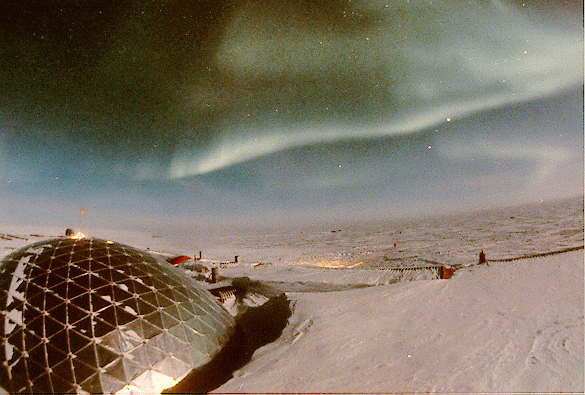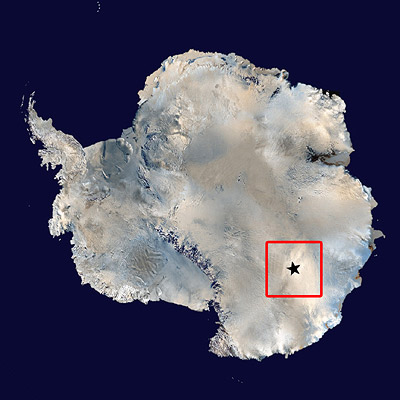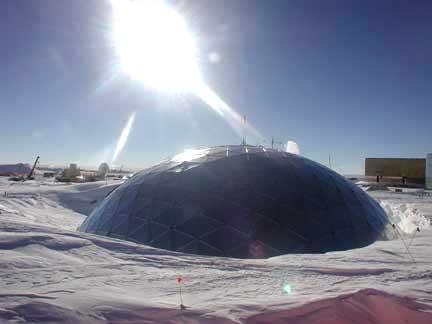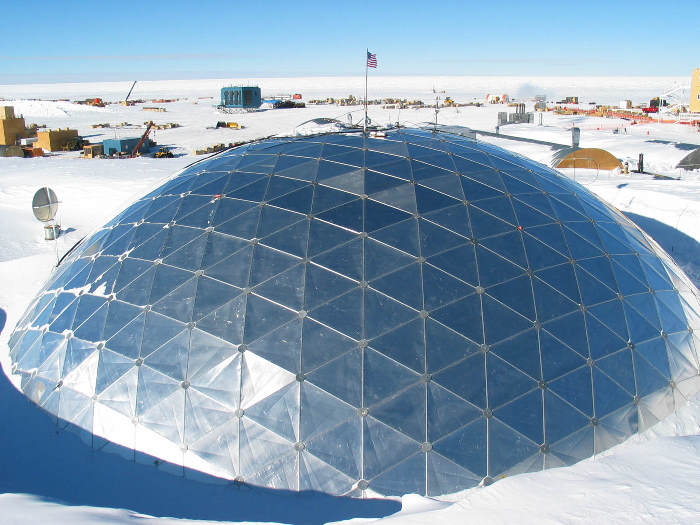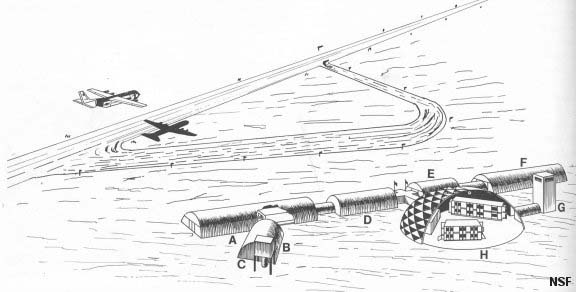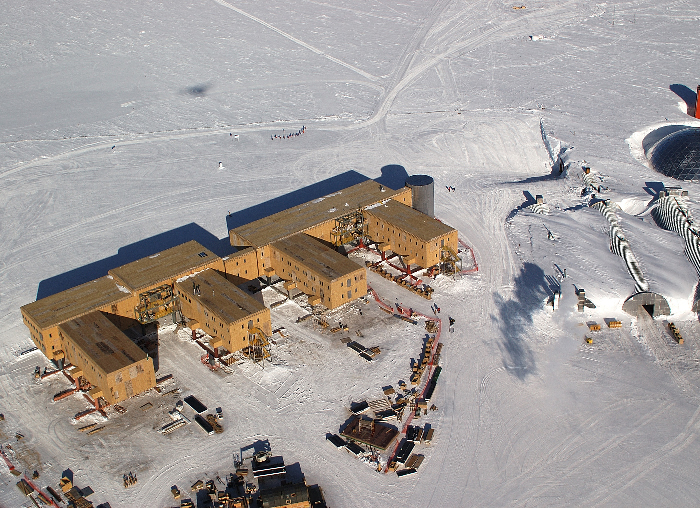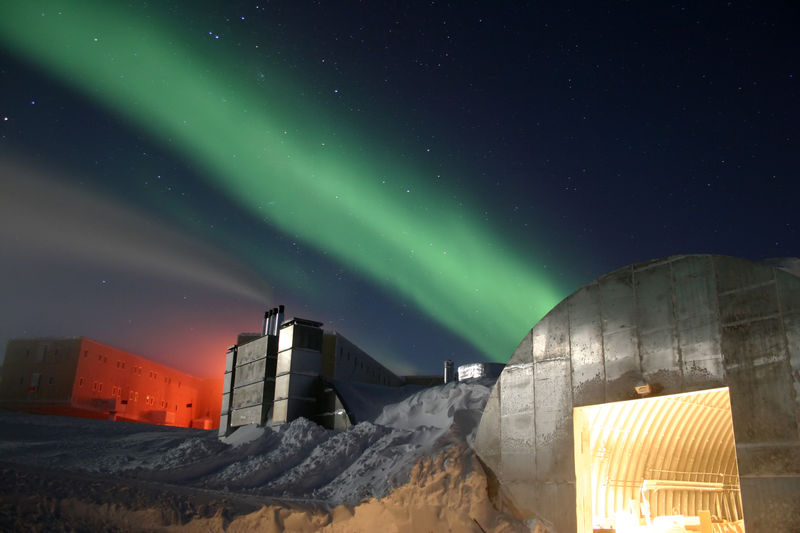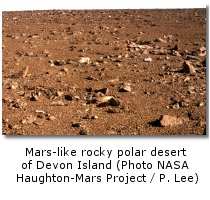|
The Cosmic Conspiracy Part Three |
|||||
|
The items on this page are a collection of various interesting activities in Antarctica. Though they have been included because they are relevant to our research, they have not yet been classified nor "painted into the big picture" |
|||||
| Antarctica Connection #001
South Pole Death Mystery - Who killed Dr Rodney Marks? Sunday Star Times, Auckland, New Zealand
Scientist Rodney Marks died at the South Pole in May 2000. Months later,
tests showed he had been poisoned by a lethal dose of methanol. Dogged
efforts by New Zealand authorities to investigate his puzzling death have
been stonewalled by Marks' American employers. Now documents obtained under
America's Freedom of Information Act suggest diplomatic heat is being brought
to bear on the NZ inquiry. Andrea Hotere reports.
An American government department appears to be applying diplomatic pressure to the New Zealand police investigation into the mysterious death of an Australian scientist poisoned at the South Pole. Police have said Dr Rodney Marks, a brilliant young astrophysicist who died in 2000 from a lethal dose of methanol, may have been murdered. They said suicide was "the least likely scenario" to explain his death. But New Zealand investigators have been frustrated by a lack of co-operation from the National Science Foundation (NSF), the US body that runs the US Antarctic programme and for whom Marks, 32, worked. The death is being investigated in New Zealand with the agreement of American and Australian authorities, and Christchurch coroner Richard McElrea has adjourned his inquest. Documents obtained by the Sunday Star-Times under America's Freedom of Information Act include a letter sent last month by Christchurch investigating officer, detective senior sergeant Grant Wormald, to the NSF. Wormald wrote: "I am aware that Mr Blum (actually Bloom) of the United States State Department has written to Mr Trevor Hughes from the New Zealand Ministry of Foreign Affairs and Trade (MFAT) questioning my perseverance in the conducting of this enquiry." Wormald had earlier told the inquest into Marks' death that police had spent four years trying to get information from the American authorities that appeared to have investigated the death, but it was unclear how far their inquiries went. No significant reports from NSF, or its contractor, Raytheon Polar Services, who ran the South Pole station, were available. Raytheon Polar Services is an offshoot of the multi-billion-dollar Raytheon Company Ltd, a US defence and aerospace systems supplier. Any information would have helped police and consequently the coroner's inquiry, Wormald said. Last week, Wormald would not comment on why he had written in those terms to NSF, but Green Party foreign affairs spokesman Keith Locke said the letter's content appeared to indicate diplomatic pressure. He said whatever doubts American authorities had about jurisdiction issues, they had a moral obligation to "offer the fullest cooperation and encourage full investigation, especially when a person dies in strange circumstances". MFAT's policy unit head Trevor Hughes said the letter expressed Wormald's interpretation, which he said was incorrect. Hughes said the NSF had done more than it was obliged to do to co-operate with the New Zealand police investigation; his legal advice was that the NSF only had to cooperate voluntarily. The Freedom of Information Act documents add to the police's confusion about what investigations were done into Marks' death by the US organisations. NSF spokesman Jeff Nesbit last week told the Star-Times that the NSF had not investigated Marks' death; the only investigation done was medical. But a letter dated June 15, 2005, by Dr Karl Erb, Director of the Office of Polar Programmes, states: "A great deal of time and effort has gone into the analysis (of Marks' death)." Another letter, dated December 1, 2006 from Wormald to the NSF, suggests his most recent inquiries from people at the station when Marks died revealed that all ethanol bottles and a still for producing alcohol of some sort had been found and repatriated to the US by the NSF. The documents also include the police survey sent to the 50 people at the Pole when Marks died. It includes questions about intravenous drug use (at the inquest in December, it was reported Marks had three needle marks in his right arm) and drinking games at the station. Nesbit said Raytheon Polar Services, as the NSF's contractor for Antarctic services, assumed all "audit, accounting and responsibility" and was responsible for medical care that Marks received. SOURCE:
Sunday Star Times, Auckland, New Zealand
Comments:
|
|||||
| Antarctica Connection #002
European Space Agency
Mission to Mars via Antarctica
A few weeks before leaving for the Antarctic Concordia
Station, the Italian-French crew that will spend over one year in one of
the harshest, isolated environments on Earth, attended two days of preparatory
training at ESA's Headquarters in Paris, France. During their stay at the
research station the crew will participate in a number of ESA experiments
– the outcome of which will help prepare for long-term missions to Mars.
As part of the Aurora Exploration Programme, ESA is considering participating in a human mission to Mars by the year 2030. Research projects are planned or are already underway to develop the technology and knowledge needed. By being involved in programmes that have requirements similar to those of a mission to Mars, ESA will gain experience on how best to prepare for such a challenging mission. "The Concordia Station is an ideal location as it replicates certain aspects of a Mars mission," explains Oliver Angerer, ESA's coordinator for the Concordia research programme. "The crew lives in an extreme environment in one of the most remote places on Earth. During the winter the base is completely cut off with no visitors and no chance for rescue. In such an isolated location, the crew has to learn to be fully self-sufficient." Built and operated jointly by the French Polar Institute (Institut Paul Emile Victor, IPEV) and the Italian Antarctic Programme (Consorzio per l’attuazione del Programma Nazionale di Ricerche in Antartide, PNRA SCrl), the Concordia Station was completed in 2004. A letter of intent was signed with IPEV and PNRA in 2002 that enabled ESA to cooperate on some aspects of the project. Capable of providing home to up to 16 crewmembers in the winter, the station consists of three buildings, which are interlinked by enclosed walkways. Two large cylindrical three-storey buildings provide the station's main living and working quarters, whilst the third building houses technical equipment, like the electrical power plant and boiler room. Last November, the first crew finished their
winter-over which was dedicated to the technical qualification of the station
. The summer season sees a swelling in the number of inhabitants as short-stay
scientists take advantage of the less extreme weather (however, mean air
temperature is about -30°C during this time!). With the second crew
now starting to gather at the remote research station, the summer season
also marks a change over of the crew.
Three scientists who are part of the next Concordia winter-over crew have already made the long journey to Antarctica. The rest of the crew, who will leave for the Antarctic research station during December, gathered at ESA's Headquarters in Paris for two days of pre-departure training. They received briefings about life at Concordia, including aspects such as safety and the implications of the Antarctic Treaty for activities at the station. The seven crewmembers also heard about research at the station, including two special experiments for which they will act as subjects during their stay. In 2003, ESA coordinated together with the Concordia partners a Research Announcement for medical and psychological research, from which six proposals were selected. The two experiments, which are the first to be implemented in the coming season, look at psychological adaptation to the environment and the process of developing group identity; issues that will also be important factors for humans travelling to Mars. For this research the crew will complete questionnaires at regular intervals throughout their stay. ESA's Mistacoba experiment, which already started a year ago when the first crew started living at the station, will also continue after the crew rotation. Starting from a newly built clean environment, samples are taken from fixed locations in the base as well as from crewmembers themselves. The Mistacoba experiment will provide a profile of how microbes spread and evolve in the station - an isolated and confined environment - over time. To protect the Antarctic environment, all waste materials must be removed from the Continent. For the Concordia Station, this means that all waste materials have to be appropriately treated. Regarding water, based on ESA life support technologies, ESA developed, together with PNRA and IPEV, a system to recycle the so-called 'grey water' collected from showers, laundry and dishwashing, which has been operating for a year in line with the requirements of the Concordia partners. Other ESA activities for Concordia include the ongoing development of a system to monitor the health and well being of the crew, part of the Long Term Medical Survey (LMTS). Physiological parameters, collected using a vest-like item of clothing, will provide valuable data about the health and fitness of crew during long-term stays in harsh environments. Real environment In mid-February the last plane of summer visitors will depart from Concordia leaving the crew to their own devices. "For those nine winter months the crew will experience extreme isolation," adds Oliver Angerer. "Concordia is a real operational environment, something we would never be able to simulate in a laboratory. This will enhance and complement our research and give us valuable insight we need to prepare for Mars." SOURCE:
European Space Agency
Copyright 2000 - 2007 © European Space
Agency. All rights reserved.
|
|||||
| Antarctica Connection #003
Malin Space Systems Antarctic Research Introduction Mike Malin, MSSS President, began research in Antarctica during the
1982-1983 austral summer, while a member of the faculty in the Department
of Geology at Arizona State University in Tempe, Arizona. This page, and
references within, illustrate aspects of this research effort.
The Antarctic environment is particularly harsh, but recent studies suggest that the absence of significant amounts of liquid water allow landscapes to be preserved for significantly longer than found elsewhere on Earth, and indeed longer than previously thought. Malin's study is designed to establish, over a timescale relatively long for human activity (~50 years), the effects of chemical and physical weathering on naturally occuring materials in many different microenvironments in the Antarctic ice-free valleys. Eleven sites were established ten years ago by deploying over 6000 individual samples of well characterized rock materials ranging in physical properties from soft non-welded pyroclastic tuff to extremely hard, fine-grained dolerite and coarse-grained granite. Samples were deployed on racks above the surface, on the surface, and beneath the surface, to accumulate the effects of chemical and physical processes over many years. Included are 2.5 cm diameter, 0.5 thick disks of rocks deployed at 7, 14, 21, 35, and 70 cm above the surface and facing N, E, S, and W, 8 cm cubes, and 5 cm long by 2.5 cm diameter cylinders. Samples have been returned after one year exposure and five years exposure. The purpose of 1994's effort was to recover materials that have been exposed for ten years. Samples remain in place that can be recovered later, nominally after 15, 20, 30, 40, and 50 years. This research was and is supported by the National Science Foundation's
Antarctic Program.
* 1983 - Preliminary
abrasion rate observations in Victoria Valley, Antarctica
SOURCE:
Malin Space Systems |
|||||
| Antarctica Connection #004
Snow Cruiser
The immediate purpose of the Snow Cruiser, however, as part of the U.
S. Antarctic Service under Admiral Byrd's command, is to speed up exploration
work and scientific investigation as well as to claim the continent as
a United States possession by maintaining colonies there for three years
as required by international agreement. Assisted by a five-passenger airplane,
it is believed that the Snow Cruiser will add as much to the knowledge
of the South Polar regions in two or three months as all previous expeditions
combined. This plane, along with others, is expected to map most of the
South Polar Continent by means of aerial cameras. The Snow Cruiser, world's
newest and largest automobile, has almost nothing in common with conventional
cars except that it runs on four pneumatic tires, but even this comparison
is not exact because the tires are so large and soft that a spring suspension
is unnecessary. Unlike an ordinary car, it has two engines instead of one,
four-wheel drive, four-wheel steering by two levers instead of a steering
wheel, two accelerator pedals, two brake pedals, a builtin hydraulic jack
on each wheel, enough Diesel fuel for a 5000-mile run (2500 gallons), 1000
gallons of airplane gasoline, bunks for four men and food for a year.
|
|||||
| Antarctica Connection #005
Glass Dome in Antarctica - A Photo Tour
~DOME HISTORY~
Artist’s concept of the new station’s design. A. Garage, mechanical
shop, and gymnasium. B. Helium storage. C. Weather balloon inflation and
launching tower. D. Diesel-electric generators and maintenance shop. E.
Biomedical and medical facilities. F. Fuel storage. G. "Skylab" tower for
all-sky photography and other atmospheric studies. H. Geodesic dome enclosing
three buildings: building 1 (clockwise from the top), science facilities
and quarters, building 2, communications equipment, store, lounge, and
library; building 3, kitchen, dining hall, post office, photographic laboratory,
and meeting hall.
|
|||||
| Antarctica Connection #006
Amundsen-Scott South Pole Station
The Amundsen-Scott South Pole Station is a U.S. research station at the South Pole, in Antarctica. Description and history It is the southernmost continually inhabited place on the planet. Its name honors Roald Amundsen and Robert F. Scott, who reached the South Pole in 1911 and 1912. It was constructed in November 1956 to support the International Geophysical Year in 1957, and has been continuously occupied since then. It currently lies within 100 meters (330 feet) of the Geographic South Pole, and drifts towards the pole at the rate of about 10 meters per year. Although the US has continuously maintained an installation at the South Pole since 1957, the central berthing, galley, and communications units have been constructed and relocated several times. Each of the installations containing these central units has been named the Amundsen-Scott South Pole Station. Snow accumulation is about 60–80 millimeters (water equivalent) per year (3 in/yr). The station stands at an elevation of 2,835 meters (9,301 ft) on interior Antarctica's nearly featureless ice sheet, about 2,850 meters (9,350 ft) thick at that location. Recorded temperature has varied between ?13.6 °C (7.52 °F) and ?82.8 °C (?117 °F). Annual mean is ?49 °C (?56 °F); monthly means vary from ?28 °C (?18 °F) in December to ?60 °C (?76 °F) in July. Average wind is 5.5 m/s (12 mph); peak gust recorded was 24 m/s (54 mph). Original station (1957–1975) The original South Pole station, now referred to as "Old Pole", was constructed by an 18-man United States Navy crew during 1956–1957. The crew landed on site in October 1956 and was the first group to winter-over at the South Pole, during 1957. Since the winter conditions at the South Pole had never been measured, the station was built partially underground in order to protect it from the worst imaginable weather. The low temperature recorded during 1957 was ?74 °C (?102 °F). These temperatures, combined with low humidity and low air pressure, are only manageable with proper protection. As with all structures at the South Pole, the original station caused wind-blown snow to build up in the surrounding area. This snow accumulation resulted in the structure being further buried by about four feet of snow per year. The station, abandoned since 1975, is now deeply buried, and the pressure has caused the mostly wooden roof to cave in. The site is therefore a hazardous area and off limits to all visitors. An aerial view of the Amundsen-Scott South Pole Station taken circa 1983. The central dome is shown along with the arches, and various storage containers and support structures. The station was relocated and rebuilt in 1975 as a geodesic dome 50 meters wide and 16 meters high that, with 14 m × 24 m steel archways, covers modular buildings, fuel bladders, and equipment. Detached buildings within the dome house instruments for monitoring the upper and lower atmosphere and for numerous and complex projects in astronomy and astrophysics. The station also included the skylab, a box-shaped tower slightly taller than the dome and accessible by tunnel. The skylab housed atmospheric sensor equipment and later a music room. During the 1970-1974 summers, the dome construction workers were housed in Korean War tents, or "jamesways". These tents consist of a wooden frame with a raised platform covered by canvas. A double-doored exit is at each end. Although the tents are heated, the heating power is not sufficient to keep them at room temperature during the winter. After several jamesways burnt down during the 1976-1977 summer, the construction camp was abandoned and later removed. However, starting in the 1981-1982 summer, extra seasonal personnel have been housed in a group of jamesways known as "summer camp". Initially consisting of only two jamesways, summer camp now has 11 berthing tents housing about 10 people each, two recreational tents and bathroom and gym structures. In addition, a number of science and berthing structures, such as the hypertats and elevated dorm, were added in the 1990s, particularly for astronomy and astrophysics. During the period in which the dome served as the main station, many changes to US South Pole operation took place. From the 1990s on, astrophysical research conducted at the South Pole took advantage of its favorable atmospheric conditions and began to produce important scientific results. Such experiments include the Python, Viper, and DASI telescopes, as well as the planned 10 m South Pole Telescope. The AMANDA / IceCube experiment makes use of the two-mile-thick ice sheet to detect neutrinos which have passed through the earth. The importance of these projects changed the priorities in station operation, increasing the status of scientific cargo and personnel. The 1998/1999 summer season was the last year that the US Navy operated
the five to six LC-130 Hercules service fleet. Beginning in 1999/2000,
the New York Air National Guard's 109th Airlift Wing took responsibility
for the daily cargo and passenger ("PAX") flights between McMurdo Station
and the South Pole during the summer.
Elevated station (2003–present) Construction of a new station, adjacent to the Dome, began in 1999. Features of the new station included a modular design, to accommodate an increasing station population, and an adjustable elevation, in order to prevent the station from being buried in snow. The building faces into the wind with a sloping lower portion of wall. This angled wall increases the speed of the wind as it passes underneath, causing the snow to be scoured away and keeping the building from being quickly buried. Wind tunnel tests show that scouring will continue to occur until the snow level reaches the second floor. In a location that receives about 20 cm (8 inches) of snow every year without ever thawing, the building's rounded corners and edges help reduce snow drifts. Because snow gradually settles over time under its own weight, the foundations of the building were designed to accommodate substantial differential settlements over any one wing, any one line, or any one column. If differential settlement continues, the supported structure will need to be jacked and leveled. The facility was designed to be jacked up an entire story, so the primary building columns are outboard of the walls. During jacking, a new height of column will be added over the existing columns, and jacks will pull the building up to the higher elevation. Operation During the summer the station population is typically over 200. Most personnel leave by the middle of February, leaving several dozen (127 in 2005) "winter-overs", mostly support staff plus a few scientists, who keep the station functional through the months of Antarctic night. The winter personnel are isolated between mid-February and late October. Wintering-over offers notorious dangers and stresses, as the station population is almost totally isolated. The station is completely self-sufficient, and powered by three generators running on JP-8 jet fuel. Between October and February, there are several flights per day of ski-equipped LC-130 Hercules aircraft from McMurdo to supply the station. Dimensional cargo capacity of the Hercules aircraft must be considered for all of the station's logistical support. Large scientific experiments and structures such as the new station are broken down into modular pieces and reassembled on-site. Limitations of the Hercules aircraft have been cited by the National Science Foundation as one of the main reasons for the proposed development of an over-ice ground supply route. Research at the station includes glaciology, geophysics, meteorology, upper atmosphere physics, astronomy, astrophysics, and biomedical studies. Most of the scientists work in low-frequency astronomy; the low moisture content of the polar air, combined with the altitude of over 2743 m (9,000 feet), causes the air to be far more transparent on some frequencies than is typical elsewhere, and the months of darkness permit sensitive equipment to run constantly. SOURCE:Wikipedia
Article
|
|||||
|
Mars On Earth NASA at the North Pole .
The Haughton-Mars Project (HMP) is an international interdisciplinary field research project centered on the scientific study of the Haughton impact structure and surrounding terrain, Devon Island, High Arctic, viewed as a terrestrial analog for Mars. The rocky polar desert setting, geologic features and biological attributes of the site offer unique insights into the possible evolution of Mars - in particular the history of water and of past climates on Mars, the effects of impacts on Earth and on other planets, and the possibilities and limits of life in extreme environments. In parallel with its Science program, the HMP supports an Exploration program aimed at developing new technologies, strategies, humans factors experience, and field-based operational know-how key to planning the future exploration of the Moon, Mars and other planets by robots and humans. The HMP is managed and operated by the Mars Institute
with support from the SETI Institute. HMP-2007 is the 11th field season
of the HMP. - SOURCE: Mars
institute
The terrain in the crater and surrounding area bears a
remarkable resemblance to Mars and with the cold temperatures, make this
an ideal place to study systems and human responses in a harsh environment.
Haughton-Mars Project (HMP) NASA Haughton Mars Project 2003 - Status Reports 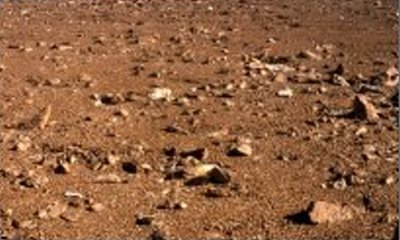
Greenhouse Project for Plants for Mars;
Mining on Mars Preparations;
NASA/Haughton-Mars Project (HMP)
Visualizing Practical Knowledge: The Haughton-Mars Project - PDF File Mars Institute's MARS-1 Humvee rover for the NASA Haughton-Mars Project (HMP)
A modified High Mobility Multi-purpose Wheeled Vehicle -- or Humvee for short -- has been added to the technological tool kit at the NASA Haughton-Mars Project (HMP), stationed on Devon Island, Nunavut, in the Canadian high Arctic. Tagged the "MARS-1", the Humvee rover is a powerful addition to scientific studies on Devon. The vehicle serves as a long-distance roving field lab. It also doubles as a test bed for studying the design and operation of future large pressurized rovers for the human exploration of the Moon and Mars.
|
|||||
| FAIR USE NOTICE: This page contains copyrighted material the use of which has not been specifically authorized by the copyright owner. Pegasus Research Consortium distributes this material without profit to those who have expressed a prior interest in receiving the included information for research and educational purposes. We believe this constitutes a fair use of any such copyrighted material as provided for in 17 U.S.C § 107. If you wish to use copyrighted material from this site for purposes of your own that go beyond fair use, you must obtain permission from the copyright owner. | |||||
|
|
